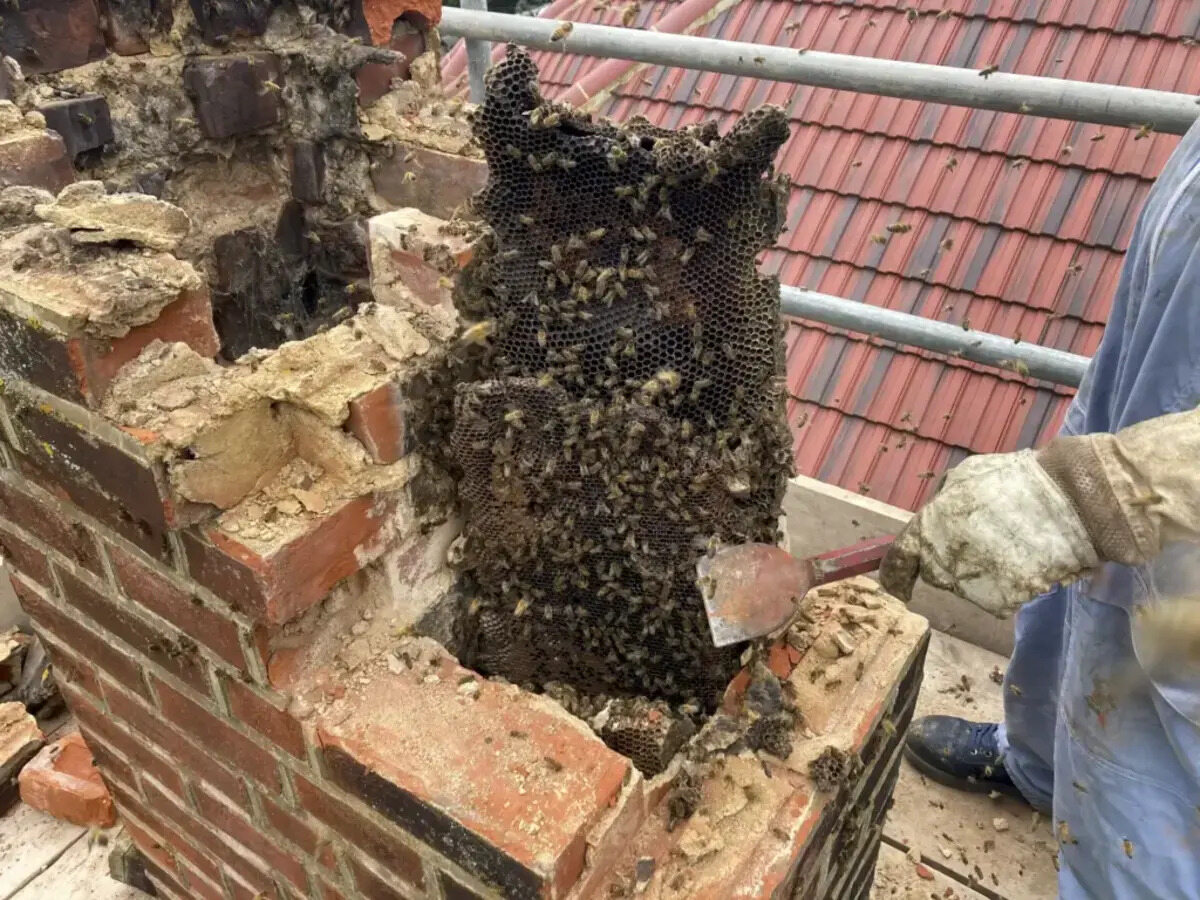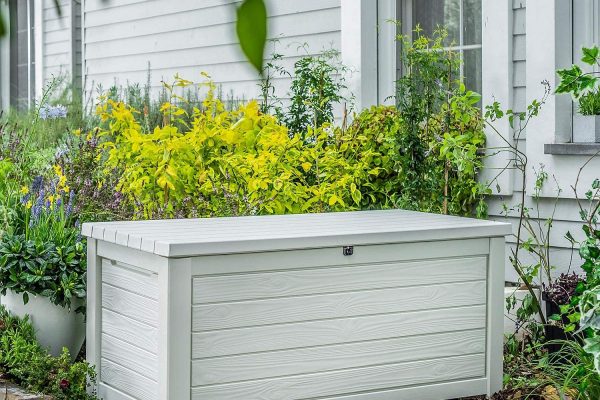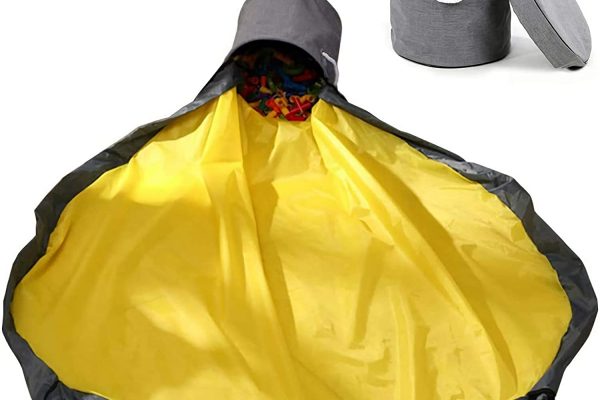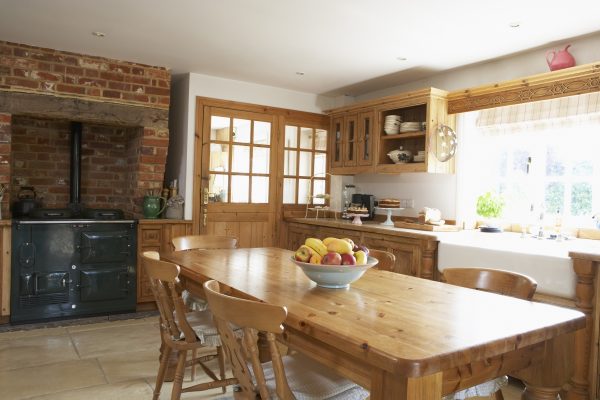

Articles
How To Remove Bees From Chimney
Modified: December 7, 2023
Learn effective methods for removing bees from your chimney with these helpful articles. Safely and easily eliminate bees without causing harm to them or your property.
(Many of the links in this article redirect to a specific reviewed product. Your purchase of these products through affiliate links helps to generate commission for Storables.com, at no extra cost. Learn more)
Introduction
Welcome to our comprehensive guide on how to safely and effectively remove bees from a chimney. If you’ve discovered a bee infestation in your chimney, it’s important to address the problem promptly and with caution. Bees can pose a risk to both your safety and the structural integrity of your chimney, making it crucial to handle the situation properly.
In this article, we will provide you with step-by-step instructions and guidance on identifying the bee problem, assessing the risks involved, choosing the right time for removal, gathering the necessary equipment, preparing the area, applying the appropriate bee removal method, safely disposing of the bees, and preventing future infestations.
Before we proceed, it’s important to note that bees, particularly honey bees, play a vital role in our ecosystem as pollinators. It is always recommended to explore alternatives to removal and consider contacting local beekeepers or professionals who can safely relocate the bees without harm.
However, if the presence of bees in your chimney poses a threat to your safety or the structural integrity of your home, it’s necessary to take action. By following the steps outlined in this guide, you can ensure the safe removal of bees while minimizing any potential harm to yourself or the bees.
Remember, bees are generally not aggressive unless they perceive a threat. It’s crucial to approach the situation calmly, taking all necessary precautions to avoid provoking the bees and risking an attack. With that in mind, let’s dive into the step-by-step process of safely removing bees from your chimney.
Key Takeaways:
- Safely removing bees from your chimney involves identifying the problem, assessing risks, choosing the right time for removal, gathering equipment, and disposing of bees responsibly. Prioritize safety and consider professional assistance if needed.
- Prevent future bee infestations by sealing entry points, maintaining chimney upkeep, trimming vegetation, using repellents, and monitoring for bee activity. Respect bees as pollinators and seek professional help if infestations persist.
Step 1: Identifying the bee problem in your chimney
Before you can effectively remove the bees from your chimney, it’s important to first confirm their presence and identify the extent of the infestation. Here are a few key indicators to help you determine if you have a bee problem:
- Visible bees or bee activity: Observe your chimney from a safe distance to see if you notice bees flying in and out or clustering around the chimney structure.
- Bee sounds: Listen for buzzing noises coming from your chimney, especially during the warmer months when bees are most active.
- Pollen and wax buildup: Inspect the exterior of your chimney for signs of pollen or wax residue, which can indicate the presence of bees.
- Unusual odors or stains: Bees may leave behind an odor or stain if honey or honeycomb has accumulated in your chimney.
- Increased bee activity in your vicinity: If you notice an influx of bees near your chimney or in your surrounding area, it could indicate a nearby hive.
If you have confirmed the presence of bees in your chimney, it is essential to identify the type of bees you are dealing with. Honey bees, for example, are typically the most common species found in chimneys and require special considerations due to their importance as pollinators.
It’s important to note that not all flying insects in or around your chimney are bees. Wasps, hornets, and other stinging insects may also build nests in chimneys. Differentiating between bee species can help determine the appropriate removal methods and precautions to take.
If you are unsure about the type of bees or need assistance in identification, it is recommended to consult with a local beekeeping association or pest control professional who can provide expertise and guidance.
Once you have accurately identified the bee problem and confirmed the presence of bees in your chimney, you can proceed to the next step: assessing the risks and taking necessary safety precautions.
Step 2: Assessing the risks and safety precautions
Before attempting to remove bees from your chimney, it is crucial to assess the risks involved and take appropriate safety precautions. Bees can become aggressive when they feel threatened, and stings can cause severe allergic reactions in some individuals. Here are some important safety measures to consider:
- Protective clothing: Wear protective clothing, including a beekeeper’s suit or thick clothing that covers your entire body. This will help minimize the risk of bee stings.
- Face protection: Use a beekeeping veil or a hat with attached netting to protect your face and neck from bee stings.
- Gloves: Wear thick, protective gloves that cover your hands and wrists to minimize the risk of stings.
- Respiratory protection: If you are allergic to bee stings or concerned about inhaling bee venom, consider using a respiratory mask or working with a qualified professional who can provide appropriate equipment.
- Work during the right weather conditions: Bees are more active and aggressive on hot, sunny days. It is advisable to perform the removal during cooler, calmer weather conditions to minimize bee activity.
- Keep children and pets away: Ensure that children and pets are kept indoors and away from the immediate removal area to reduce their risk of being stung.
- Inform neighbors: If the bee problem in your chimney may potentially affect your neighbors, it is courteous to inform them in advance so they can take necessary precautions.
- Access the chimney safely: Use appropriate ladders or scaffolding to gain safe access to the chimney. Ensure stability and follow ladder safety guidelines to prevent accidents.
Assessing and mitigating risks is crucial when dealing with bees. If you have concerns about your ability to safely remove the bees from your chimney, it is highly recommended to seek the assistance of a professional beekeeper or pest control expert. They have the knowledge, experience, and proper equipment to handle bee removal safely.
Remember, prioritizing your safety and the safety of others is paramount when dealing with potentially aggressive bees. Next, we’ll move on to step 3: choosing the right time for bee removal.
Step 3: Choosing the right time for bee removal
Choosing the right time for bee removal is crucial to ensure the success of the process and minimize the risk of bee aggression. Timing is especially important when dealing with honey bees due to their importance as pollinators. Here are some factors to consider when determining the ideal time for bee removal:
- Season: Spring and early summer are the most active periods for bees, so it’s generally better to wait until later in the summer or early fall to minimize bee activity.
- Time of day: Bees are most active during daylight hours. It is advisable to perform the removal early in the morning or late in the evening when bees are less active. Avoid removing bees during hot, sunny afternoons, as they are more likely to be agitated.
- Weather conditions: Choose a day with mild weather conditions, mild temperatures, and minimal wind. Avoid performing the removal during rain or high winds, as it can make the process more challenging and increase the risk of accidents.
- Flower bloom: Consider the local flower bloom cycle. Removing bees during a time when alternative food sources are scarce may increase their aggression and make the process more challenging.
By carefully selecting the time for bee removal, you can increase the likelihood of success and minimize potential harm to yourself and the bees. Additionally, taking time to observe the bees’ activity patterns prior to removal can provide valuable insights into their behavior and help you plan accordingly.
When removing bees from your chimney, always remember to prioritize the safety of yourself, others, and the bees. If you are unsure about the timing or have concerns about the removal process, it is advisable to consult with a local beekeeping association or a professional beekeeper who can provide guidance and assistance.
Now that you have chosen the right time for bee removal, it’s time to move on to step 4: gathering the necessary equipment.
Step 4: Gathering the necessary equipment
Before you proceed with bee removal from your chimney, it’s important to gather the necessary equipment to ensure a safe and successful operation. Having the right tools at hand will make the process more efficient and minimize the risk of bee stings. Here are some essential items to collect:
- Beekeeping suit: Obtain a beekeeping suit or a thick, protective clothing that covers your entire body. This will provide a barrier against bee stings and protect your skin during the removal process.
- Beekeeping veil or hat with attached netting: Use a beekeeping veil or wear a hat with attached netting to protect your face and neck from potential bee stings.
- Beekeeping gloves: Wear thick, durable gloves that cover your hands and wrists to protect against bee stings.
- Smoker: A bee smoker is a tool that produces cool smoke, which helps calm the bees and makes them more manageable during removal. Make sure to have a smoker filled with natural, untreated fuel such as burlap or woodchips.
- Flashlight: A flashlight will help you inspect the chimney more thoroughly and locate the bee hive or colony.
- Bee brush: A soft-bristled bee brush can be used to gently brush away bees from surfaces without harming them.
- Sprayer: A spray bottle filled with a mixture of water and mild dish soap can be used to create a barrier or mist to redirect bees during the removal process. Avoid spraying directly on the bees.
- Sealant materials: If necessary, gather appropriate materials such as caulk or chimney caps to seal off potential entry points after the bee removal is complete.
By ensuring that you have all the necessary equipment ready, you can approach the bee removal process with confidence and be prepared for any situation that may arise.
It’s important to note that if you are not experienced or comfortable handling bees, it’s recommended to seek the assistance of a professional beekeeper or pest control expert. They will have the expertise and proper tools to safely remove the bees from your chimney.
Now that you have gathered the necessary equipment, let’s move on to step 5: preparing the surrounding area.
To remove bees from a chimney, wait until dusk when they are less active, then use a bee smoker to calm them. Seal off the chimney and call a professional beekeeper to safely relocate the bees.
Step 5: Preparing the surrounding area
Before you begin the bee removal process from your chimney, it’s essential to properly prepare the surrounding area to ensure safety and prevent any potential damage. Taking the time to make necessary preparations will help facilitate a smooth and successful removal. Here’s what you need to do:
- Clear the immediate area: Remove any objects or debris near the chimney that could obstruct your access or pose a potential hazard during the removal process.
- Protect nearby vegetation: Cover any nearby plants, shrubs, or flowers with a tarp or sheet to minimize the risk of accidental damage during the removal.
- Notify family members or neighbors: Inform your family members or neighbors about the bee removal process. Advise them to remain indoors and keep windows and doors closed to prevent bees from entering their homes.
- Close off access points: Seal off openings or cracks in the chimney structure, vents or other potential entry points to prevent bees from escaping into your home or finding another way inside.
- Secure the area: Use caution tapes or temporary barriers to restrict access to the area around your chimney. This will help prevent accidental encounters with bees, especially if you live in a high-traffic area.
- Prepare an escape route: Identify a clear and safe exit path in case you need to move quickly away from the bees or encounter an aggressive reaction during the removal process.
- Have a phone nearby: Keep a phone or mobile device within reach in case of emergencies. Ensure it is fully charged and easily accessible if you need to call for professional assistance.
By taking these precautionary measures, you can minimize the risks associated with bee removal and create a safer environment for both yourself and the bees.
It’s important to note that if you are uncertain about performing the bee removal process on your own or have concerns about safety, it’s advisable to contact a professional beekeeper or pest control expert who can assist you in a safe and effective removal.
Now that the area is prepared, you can move on to step 6: applying the appropriate bee removal method.
Step 6: Applying the appropriate bee removal method
Now that you’ve identified the bee problem, assessed the risks, gathered the necessary equipment, and prepared the surrounding area, it’s time to apply the appropriate bee removal method. The method you choose will depend on the type of bees, the location of the hive, and your level of experience. Here are a few common bee removal methods:
- Live removal: This method involves safely capturing and relocating the bees without causing harm. It is recommended for honey bees, as they are crucial pollinators and play a vital role in our ecosystem. To perform a live removal, you may need to consult with a professional beekeeper who has the expertise and knowledge to handle bees safely.
- Smoke method: Utilizing a bee smoker, introduce cool smoke into the chimney to calm the bees. This technique disrupts their communication and triggers their instinct to protect their queen and flee. While the bees are disoriented, you can effectively remove the hive or colony from the chimney.
- Chemical-free trapping: Place a specially designed bee trap near the entrance of the chimney. These traps are designed to attract the bees and capture them humanely. Once all bees are trapped, you can remove the trapped bees and seal the chimney to prevent future infestations.
- Seek professional help: If you are not comfortable or experienced in handling the removal process, it’s best to reach out to a professional beekeeper or pest control expert. They have the necessary skillset, knowledge, and equipment to safely and effectively remove the bees from your chimney.
It’s important to approach the bee removal process calmly and with caution. Bees are typically not aggressive unless they feel threatened. Follow the instructions provided with the chosen method or consult with a professional to execute the removal properly.
Remember, the goal is to remove the bees safely while minimizing harm to yourself and the bees. Additionally, ensure that you are in compliance with any local or state regulations regarding bee removal or relocation.
Once you have successfully applied the appropriate bee removal method, and the bees have been safely removed from the chimney, the next step is to dispose of the bees properly, which we will cover in step 7.
Step 7: Safely disposing of the bees
After successfully removing the bees from your chimney, it’s important to handle their disposal with care and compassion. Here are some recommendations for safely disposing of the bees:
- Contact local beekeepers: Reach out to local beekeeping associations or beekeepers in your area. They may be interested in collecting the bees for relocation. Many beekeepers are eager to add new colonies to their apiaries and will gladly take the bees off your hands.
- Consult with professionals: If you enlisted the help of professional beekeepers or pest control experts for the removal process, they may have arrangements in place for bee collection and relocation.
- Construct a temporary hive: If you have the knowledge and resources, you can construct a temporary hive to house the bees until you can find a beekeeper to collect them. This will require appropriate equipment and proper handling to ensure the safety of both the bees and yourself. It’s essential to consult with experts or experienced beekeepers for guidance.
- Provide alternative food sources: To prevent the bees from returning to your property or seeking food elsewhere, provide alternative food sources away from your home, such as sugar water or suitable floral resources. This can encourage the bees to find sustenance elsewhere.
- Do not exterminate the bees: It’s crucial to avoid resorting to extermination methods, as bees are crucial pollinators and play a vital role in our ecosystem. Promoting their survival and relocation is always the preferred option.
Remember, bees are essential for our environment, and every effort should be made to preserve their populations. By disposing of the bees safely, either by relocating them or allowing a beekeeper to collect them, you can contribute to their preservation and the health of the ecosystem.
If you were unable to find a beekeeper or are unsure about the appropriate disposal method, consider reaching out to your local agricultural extension office or environmental organizations for guidance. They may be able to connect you with resources or offer assistance in finding a suitable solution.
Now that you have successfully disposed of the bees, it’s time to focus on preventing future bee infestations in your chimney, which we will explore in step 8.
Step 8: Preventing future bee infestations
After going through the process of removing bees from your chimney, it’s important to take preventive measures to avoid future infestations. Here are some steps you can take to minimize the likelihood of bees returning to your chimney:
- Seal potential entry points: Inspect your chimney and surrounding areas for any gaps, cracks, or openings that bees could use as entry points. Seal these areas off with appropriate materials such as caulk or chimney caps to prevent bees from establishing new hives.
- Maintain regular chimney maintenance: Schedule routine inspections and maintenance for your chimney to ensure it remains in good condition. Promptly address any structural issues or damage that could provide access points for bees.
- Trim vegetation around the chimney: Keep shrubs, trees, and other vegetation trimmed and well-maintained around your chimney. Bees are attracted to flowers and plants, so minimizing their proximity to the chimney can discourage them from building hives there.
- Install bee repellents: Consider using bee repellents around the chimney area. Certain natural repellents such as mint, eucalyptus, or garlic can help deter bees. However, it’s important to research the specific repellents and their proper application, as some may also repel beneficial insects.
- Monitor your chimney regularly: Regularly inspect your chimney for any signs of bee activity. Look for bees flying in and out, bees clustering around the chimney structure, or residue such as wax or pollen. Early detection can help prevent a full infestation.
- Consult professionals: If you consistently experience bee infestations in your chimney, consult with professionals such as beekeepers or pest control experts for additional advice and long-term solutions. They can offer insights specific to your situation and help develop a more robust prevention plan.
By implementing these preventive measures, you can significantly reduce the likelihood of future bee infestations in your chimney. Remember that bees are beneficial creatures, so it’s essential to take steps to prevent conflicts while preserving their role as pollinators in our environment.
While it’s natural to want to handle bee infestations on your own, it’s always advisable to seek professional extermination or relocation services if you are uncertain about the removal process or are dealing with aggressive species. A professional can ensure the safety of both you and the bees while effectively addressing the problem.
With these preventive steps in mind, you have successfully completed the process of removing bees from your chimney and taken measures to prevent future infestations. By doing so, you can enjoy a bee-free chimney and contribute to a harmonious coexistence with these remarkable pollinators.
If you have any concerns or further questions, don’t hesitate to seek advice from local beekeeping associations or pest control professionals who can provide expert guidance tailored to your specific situation.
Now you are well-equipped to handle bee infestations in your chimney in a safe and responsible manner. Congratulations!
Conclusion
Congratulations on successfully completing the process of removing bees from your chimney! By following the steps outlined in this guide, you have taken the necessary precautions, acquired the proper equipment, and executed the bee removal process while prioritizing safety and the well-being of both yourself and the bees.
Remember, bees play a vital role in our ecosystem as pollinators, so whenever possible, explore alternatives to removal and consider contacting local beekeepers who can safely relocate the bees without harm. However, if the presence of bees in your chimney poses a risk to your safety or the structural integrity of your home, it’s essential to address the problem promptly and responsibly.
Throughout this guide, we covered important steps such as identifying the bee problem, assessing the risks involved, choosing the right time for removal, gathering the necessary equipment, preparing the surrounding area, applying the appropriate removal method, safely disposing of the bees, and taking preventive measures to avoid future infestations.
By approaching the bee removal process with knowledge, caution, and respect for these remarkable creatures, you have not only resolved a potential issue but also contributed to the preservation of bee populations and the health of our environment.
Always remember, if you are uncomfortable or uncertain about handling bee removal on your own, it is best to seek the assistance of professional beekeepers or pest control experts. They have the expertise and tools necessary to safely handle bee removal while minimizing any risks involved.
Thank you for taking the time to read our comprehensive guide on how to remove bees from a chimney. We hope you found the information helpful, informative, and empowering. Should you ever encounter a bee infestation in the future, you now have the knowledge and understanding to address the situation in a responsible and effective manner.
Now go forth and enjoy a bee-free chimney with the peace of mind that you have made a positive impact on the preservation of our invaluable pollinators!
Frequently Asked Questions about How To Remove Bees From Chimney
Was this page helpful?
At Storables.com, we guarantee accurate and reliable information. Our content, validated by Expert Board Contributors, is crafted following stringent Editorial Policies. We're committed to providing you with well-researched, expert-backed insights for all your informational needs.














0 thoughts on “How To Remove Bees From Chimney”